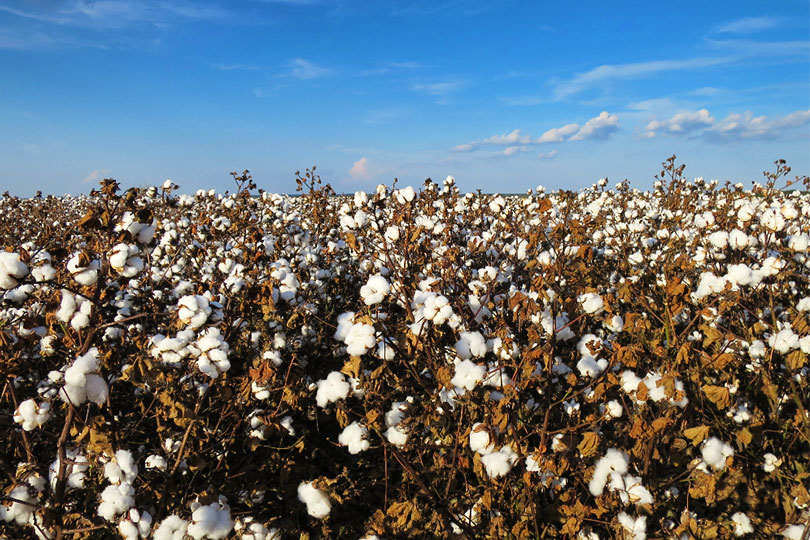By Jennifer Dorsett
Field Editor
Farmers across the U.S. say they will plant less cotton for the 2020 growing season, but the reduction in cotton acreage may not be as significant as some feared.
In 2020, American cotton farmers are expected to plant about 12.08 million acres of upland and extra-long staple cotton, according to the annual acreage survey conducted by Cotton Grower magazine. That’s about a 12 percent decrease from 2019.
It’s a testament to the resolve of American farmers, Cotton Grower editor and publisher Beck Barnes said.
“If you had asked me to give a ballpark number when we first started the process, I would have told you 10 million [acres planted in cotton],” Barnes wrote. “I did tell folks that I’d be ‘over the moon’ if we could get to 11 million acres in the U.S. in 2020. Even that number—a reduction of 2.7 million acres from 2019—would’ve represented a victory in the face of a stressed farm economy.”
If the projections hold true, this would be the sixth time in the last 10 years that U.S. farmers have planted more than 12 million acres in cotton. Barnes said that’s a good indicator of cotton’s staying power in the face of market challenges.
Lower commodity prices are the biggest concern for farmers this year, and cotton is no exception. Trade disputes with many of our major trading partners have disrupted normal marketing patterns.
But most farmers still think planting cotton will be a profitable choice.
Regional highlights from the survey show farmers across the Southwest region of Kansas, Oklahoma and Texas will plant a combined 7.09 million acres.
And Texas will once again lead the nation in cotton acreage. Farmers across the Lone Star State intend to plant 6.34 million acres of cotton in 2020—89 percent of the Southwest regional total.
That’s just slightly less than Texas’ 10-year average of 6.9 million planted acres, according to U.S. Department of Agriculture National Agricultural Statistics Service data.
“It seems like Texas farmers are being a little more cautious based off the last growing season we had. The weather last year was off to a good start, then the whole state turned hot and dry, just like 2018,” Texas Farm Bureau Commodity and Regulatory Activities Associate Director Brant Wilbourn said. “We ended up with lots of cotton acres that were abandoned. There are probably quite a few people who may not want to plant that much cotton again, because it was such a bad year for them.”
But in other Southwest states, cotton acreage may be on the rise.
Kansas, forecast at 200,000 total acres, is one of only three states expected to increase cotton acreage in 2020.
Although Oklahoma’s 548,000 projected acres represent a large decrease from 2019, that could change by the time planting begins, according to Seth Byrd, Oklahoma State University Extension cotton specialist.
“I’m being cautious for the 2020 estimates, but the growth reflects what will be hopefully better planting conditions,” Byrd said. “If markets are favorable, this number could reach 700,000.”
The survey was conducted in November and December 2019. Many respondents said they would watch markets closely over the winter months before making a final decision.
If current market conditions remain the same, cotton will be competitive against other commodities, according to survey respondents. Prices may stay low, but most farmers produced a quality crop with strong yields in 2019 and are hopeful for the same in 2020.
“Commodity prices were the most common factor cited as affecting acreage decisions,” he concluded. “Many respondents cited the cost of cotton harvest equipment—and the downstream effects of those costs—as a factor in their cropping decisions. On the positive side, the majority of those asked cited strong yields in 2019 as a reason to be enthusiastic about cotton again in 2020.”

